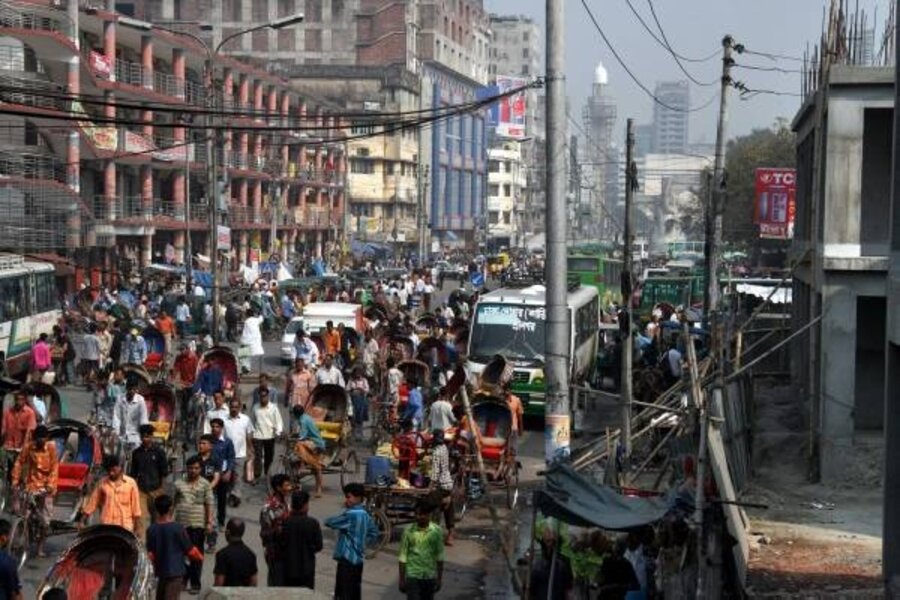What do slums teach us about greener living?
Loading...
Stewart Brand, creator of the Whole Earth Catalog, has a new book coming in October called Whole Earth Discipline: An Ecopragmatist Manifesto.
In it, the longtime environmentalist argues that nuclear power, genetically modified crops, and geo-engineering – approaches generally abhorred by enviro-purists – are necessary to solve the litany of ecological problems currently facing humanity.
(For a quick run-through of the ideas contained in the book, see Mr. Brand's TED talk here. And here's a more recent, albeit longer talk.)
The ideas Brand proposes are not necessarily new. (For articles on geoengineering, click here. And here's a story on the "new nuclear enthusiasm."
But one of Brand's ideas warrants special attention for its counterintuitive implications. Urban slums, he says, nearly all of which exist in the developing world, are a solution to poverty, he argues, not a cause.
They're also good for the environment.
In the October issue of Wired magazine (though unavailable on its website at this writing), "The Smart List" issue, he explains:
What makes squatter cities so important?
That's where vast number of humans – slum dwellers – are doing urban stuff in new and amazing ways. And [...] there are a billion of them! People are trying desperately to get out of poverty, so there's a lot of creativity; they collaborate in ways that we've completely forgotten how to do in regular cities. And there's a transition: People come in from the countryside, enter the rickshaw economy, and work for almost nothing. But after a while, they move uptown, into the formal economy.[...]
Why are they good for the environment?
Cities draw people away from subsistence farming, which is ecologically devastating, and they defuse the population bomb. In the villages, women spend their time doing agricultural stuff, for no pay, or having lots and lots of kids. When women move to town, it's better to have fewer kids, bear down, and get them some education, some economic opportunity. Women become important, powerful creatures in the slums. They're often the ones running the community-based organizations, and they're considered the most reliable recipients of microfinance loans.
To recap, people leaving the countryside for cities remove some of the ecological strain on the surrounding landscape. This migration also helps solve, without top-down coercion, the population problem. (See Monitor colleague Greg Lamb's story on overpopulation.) The economic empowerment of women in slums leads to fewer children, and birthrates for new urban arrivals quickly fall to replacement level – that's 2.1 children per couple – and then keep dropping, he says.
The numbers of people involved in this worldwide migration to cities are astounding. Every week, about 1.3 million people move to cities around the world, mostly in developing nations. That's 70 million new city-dwellers per year. "Villages of the world are emptying out," Brand says in his TED talk.
To support his thesis that squatter slums present a solution rather than a problem, Brand cites "The Challenge of Slums," a 2003 global report by the United Nations Human Settlements Program, and "Shadow Cities: A Billion Squatters, a New Urban World," by journalist Robert Neuwirth.
The UN report says: “Cities are so much more successful in promoting new forms of income generation, and it is so much cheaper to provide services in urban areas, that some experts have actually suggested that the only realistic poverty reduction strategy is to get as many people as possible to move to the city.”
In the Wired article, Brand explains what government can do to help:
The suffering is great, and crime is rampant [in slums]. We made the mistake of romanticizing villages, and we don't need to make that mistake again. But the main thing is not to bulldoze the slums. Treat the people as pioneers. Get them some grid electricity, water, sanitation, crime prevention. All that makes a huge difference.





